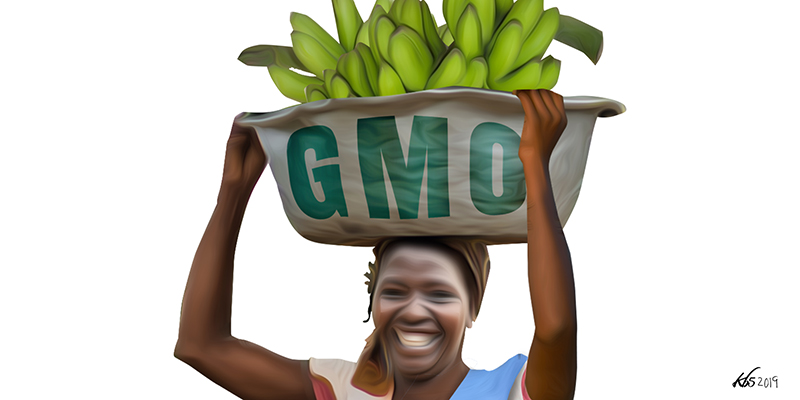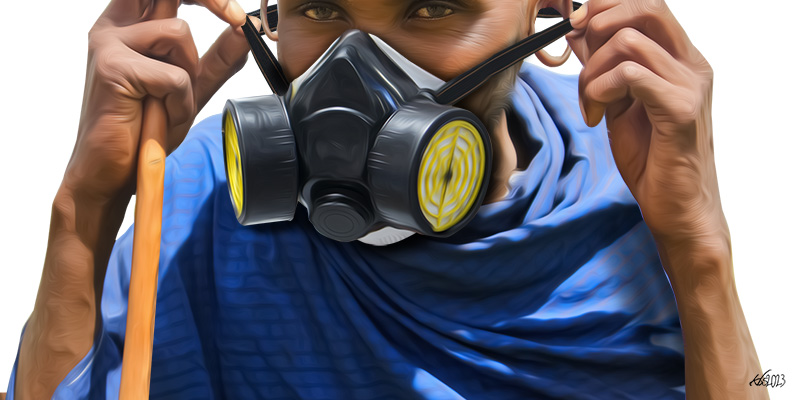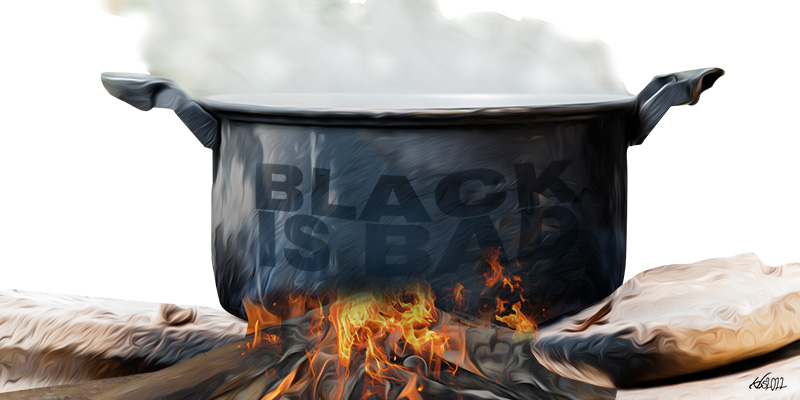Newly elected President William Ruto has, to use a much abused expression, hit the ground running. I am, however, not certain that he is running in the right direction. On 3 October 2022, during the second meeting of his recently (and unconstitutionally) constituted cabinet, Ruto announced that his government had authorized the cultivation and importation of genetically modified crops and animal feeds, sweeping aside the grave concerns raised by Kenyans and lifting a ten-year ban with the stroke of a pen.
The decision was made at a time when Kenya is facing the worst drought in four decades that has left over four million people facing starvation. According to President Ruto, the adoption of GMOs is the solution to the recurring cycles of drought and famine that Kenyans have been increasingly experiencing.
I shall not go into the merits and demerits of what some call Frankenfoods here. However, it seems to me that Ruto’s decision is driven solely by the political imperative to bring down the price of maize through cheap imports of GM maize following the withdrawal of the maize subsidy.
Already, back in November 2018, the Route to Food Initiative (RTFI), the Kenya Biodiversity Coalition (KBioC), the Africa Biodiversity Network (ABN) and Greenpeace Africa had issued a joint statement raising “concerns over recent disconcerting developments in the country, that [suggest] the Government has made [a] unilateral decision to adopt genetically modified crops”, and adding that “an all-inclusive nationwide discourse through public participation, which addresses whether the technology is appropriate for us, is being circumvented”.
The group also voiced their suspicion that the report of the Task Force to Review Matters Relating to Genetically Modified Foods and Food Safety that was set up by the Ministry of Health in 2013 was being withheld because it was against the adoption of GM foods. This suspicion may well be founded since, in making the announcement, State House said that the decision to lift the GMO ban was “made in accordance with the recommendation of the Task Force”, while failing to make the so-called Thairu report—which was submitted in 2014—available for public scrutiny.
The cabinet said that in reaching its decision to lift the ban it had also referred to reports of the European Food Safety Authority, among others.
The European Union’s policy on GMOs “respects the right-to-know by ensuring clear labelling and traceability of GMOs. This requires reliable methods for the detection, identification and quantification (for authorised GMO) in food, feed, and the environment”. There is zero tolerance for unapproved GMOs and stringent regulation of products originating from or containing GMOs.
A detailed risk analysis and the availability of a validated method for locating, identifying, and quantifying GMOs in food or feed are prerequisites for authorization. For any GM launch, biotech businesses that want to market their product in the EU must submit an application. A very precise way of detecting each unique GMO is included in the application dossier.
The terms of reference of the government’s GMO task force included, among others, assessing Kenya’s infrastructural capacities to monitor genetically modified products in the country; assessing the adequacy of qualified human resource capacity to monitor research, use and importation of genetically modified products into the country; and recommending approval procedures for imports of GM foods.
If we are to look only at the procedures established by the National Biosafety Authority for the importation of GM products into the country, then we may conclude that Kenya lacks the infrastructural and qualified human resource capacity to monitor their research, use and importation. In effect, an entity wishing to import a GM product into the country is merely required to provide the particulars of the supplier, the nomenclature of the GMO, proof that the GMO has been registered in the exporting country, its use in the country of origin, its intended use in Kenya, a summary risk assessment, methods and plans for safe handling, storage, transport and use, and the emergency response foreseen in the event of an accident with the GMO. The second of the two-page the application document is reserved for the applicant’s signature before a commissioner for oaths, a magistrate or a judge. Means of detection of GMOs are not mentioned.
It would seem then that Ruto’s government has fully devolved the responsibility for Kenya’s biosafety and biosecurity to the authorities of foreign nations. This is very frightening when you consider, for example, that the European Union Regulation EC304/2003 allows EU companies to produce and export to other countries pesticides that are banned or restricted in the EU. This double standard is the reason why active ingredients which have been withdrawn in the EU find their way to Kenya, poisoning our bodies and our environment, and destroying our biodiversity.
Maize is not the only ugali
The lifting of the ban on GMOs may have sounded the death knell for Kenyan small-scale maize growers; GM maize is to be found on the international markets at prices that defy all competition, which will now prove to be a boon for well-connected maize-importing cartels.
But maize, a staple in the majority of Kenyan households, is a relatively recent arrival on our national menu, becoming a major staple during the First World War when disease in millet led to famine.
As Noel Vietmeyer observes in the foreword to the first volume of Lost Crops of Africa,
“Lacking the interest and support of the authorities (most of them non-African colonial authorities, missionaries, and agricultural researchers), the local grains could not keep pace with the up-to-the-minute foreign cereals, which were made especially convenient to consumers by the use of mills and processing. The old grains languished and remained principally as the foods of the poor and the rural areas. Eventually, they took on a stigma of being second-rate. Myths arose—that the local grains were not as nutritious, not as high yielding, not as flavorful, nor as easy to handle. As a result, the native grains were driven into internal exile. In their place, maize, a grain from across the Atlantic, became the main food from Senegal to South Africa.”
But with initiatives such as the Busia County Biodiversity Policy, which recognises the role that biodiversity can play in addressing food insecurity, the tide is turning and Kenyans are rediscovering and embracing the culinary habits of our forebears. You would think then that the GMO decision will not, in the main, affect the choices we make in the foods we consume. That those of us a tad squeamish about eating foods that have been genetically interfered with can opt out.
Were it that simple.
Many Kenyans are unaware that the Seed and Plant Varieties Act Cap 326 of 2012 prohibits farmers from sharing, exchanging or selling uncertified and unregistered seeds. Yet, to mitigate against the effects of perennial droughts and the escalating costs of hybrid seeds, community seed banks have been conserving indigenous seeds—that are demonstrably more climate-resilient—for sale during the planting season, in contravention of the law and at the risk of a one million shilling fine, or two years’ imprisonment, or both. Criminalising a system through which small-scale farmers acquire 90 per cent of their planting material does not augur well for Kenya’s food security, or for our biodiversity. Small-scale farmers are fighting back, however, with a group from Machakos recently going to court to challenge the legislation. It remains to be seen who between David and Goliath will prevail.
But maize, a staple in the majority of Kenyan households, is a relatively recent arrival on our national menu, becoming a major staple during the First World War when disease in millet led to famine.
What is clear is that Kenya’s David, while remaining impoverished over the decades since independence, is the mainstay of the country’s agriculture in terms of productivity. The Economic Survey (2021) of the Kenya National Bureau of Statistics reports that,
“The share of marketed agricultural output for small farms increased marginally to 73.3 per cent in 2020. This is a reflection of the continued dominance of the smallholder sector in the marketing of agricultural produce during the year under review. The value of sales through small farms increased by 9.4 per cent from KSh 341.4 billion in 2019 to KSh 373.6 billion in 2020. Similarly, the value of sales by large farms increased by 8.9 per cent from KSh 125.0 billion in 2019 to KSh 136.1 billion in 2020.”
The survey defines large farms as those above 20 hectares.
The small-holder has consistently outperformed the large-scale farmer despite government policies that have since the 70s viewed smallholders as without agency beyond adopting technologies that are presented as capable of transforming agriculture and building livelihoods. The adoption of GMOs is likely to be yet another of these technologies that, together with unjust seed legislation, will increase rather than decrease Kenya’s food insecurity.
President Ruto worries about food insecurity but fails to consider the very ready solution available to his administration and recommended in the Agricultural Policy (2021) of the Ministry of Agriculture, Livestock, Fisheries and Cooperatives, namely, conservation agriculture.
The Food and Agriculture Organisation (FAO – also quoted in Ruto’s decision to lift the GMO ban) recommends conservation agriculture as it is a sustainable system of production that conserves and enhances natural resources; enhances biodiversity; assists in carbon sequestration; is less labour and fertilizer intensive; improves the health of soils; and increases yields over time.
Criminalising a system through which small-scale farmers acquire 90 per cent of their planting material does not augur well for Kenya’s food security, or for our biodiversity.
The very promising results obtained among the small-scale farmers that have adopted the system following training under the FAO beginning in 2015 show that the government would do well to promote conservation agriculture among smallholders as a means of mitigating both against food insecurity and the effects of climate change, rather than hastily reaching for GM technologies that the country is ill-equipped to safely handle.
But clearly, the president is not on the same page as his Ministry of Agriculture and so, like others, I can only conclude that Ruto’s lifting of the GMO ban is for the benefit of the seed multinationals and their clients, the large-scale farmers who have taken over most of the productive land to grow cash crops for export, leaving small-scale farmers to exploit marginal lands for the production of food crops for local consumption. And for the benefit of maize-importing cartels.








